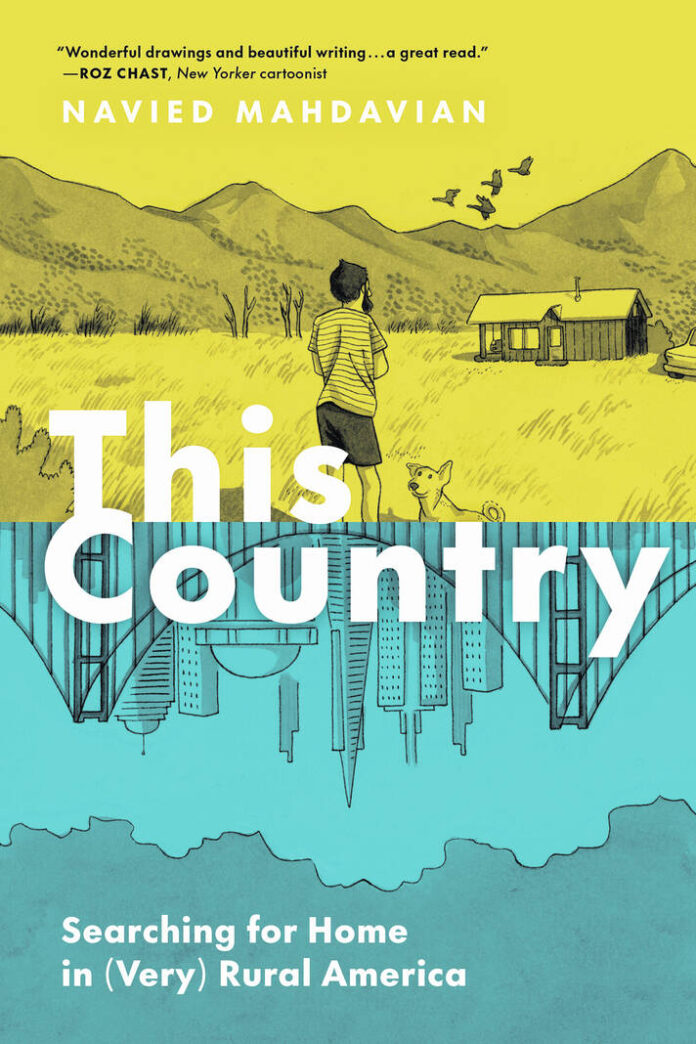In words — and pictures — writers are finding inventive ways to explore feeling at home, whatever that means to them. Here are some memoirists with very different takes:
‘This Country: Searching for Home in (Very) Rural America’ (Princeton Architectural Press)
Navied Mahdavian’s lyrical graphic memoir details the three years he and his wife, Emelie, a filmmaker, spent living off the grid in rural Idaho. Mahdavian, a cartoonist whose work often appears in the New Yorker, uses spare and beautiful illustrations to detail the challenges of making a life, learning to grow food and generating their own electricity.
They also struggle to fit into their community, which is predominately white and conservative. Mahdavian, the son of immigrants from Iran, encounters microaggressions about his bearded appearance, endures anecdotes about terrorists and faces a political culture that rejects change.
The couple love the beauty of the natural setting, but after their biracial daughter is born, they must decide if it’s a welcoming place for her to grow up.
A running thread references the historical presence and present-day absence of the Indigenous population, including pictographs painted on mountainsides. Mahdavian wonders, ” What disappeared from this place first? The bison or the willows? The bighorn sheep or the sheepeater Shoshone?”
‘Birding While Indian: A Mixed-Blood Memoir’ (Mad Creek Books)
Addressing U.S. treatment of the Indigenous population directly is Thomas C. Gannon’s timely memoir. Gannon grew up in South Dakota, the son of a Lakota mother and an Irish father, an abusive alcoholic. After his parents’ divorce, Gannon is raised by his mother and then sent to a Catholic boarding school for “Indian” children. He bears witness to the racist cruelty that Indigenous people, including his family, encounter from the white population. He also struggles to find himself as a biracial boy who identifies most closely with his Lakota heritage.
Calling his book an “anti-memoir,” Gannon details several histories: his own coming-of-age , his scholarship in Lakota history and Indigenous literature and his life as an avid birdwatcher. “As a crossbreed person, I feel inordinately pulled toward such a cross-genre form,” writes the professor at the University of Nebraska-Lincoln, an enrolled member of the Cheyenne River Sioux Tribe.
Propelled by Gannon’s dry wit, self-deprecating humor and righteous anger at the injustices of “Christo-Columbus colonialism,” the book also is a moving testament to Gannon’s hardworking mother, whose “life was so much more a suffering and struggle and triumph.”
‘Chinese Prodigal: A Memoir in Eight Arguments’ (Grove Atlantic)
David Shih’s book is structured as a series of essays that combine personal anecdotes with scholarly insights. A professor of English at the University of Wisconsin-Eau Claire, Shih examines historical and present-day issues that shape the construction of race and experience of racism in the United States, all from his Asian American perspective.
Shih also details his relationship with his father, whose death in 2019 inspired Shih to write this book. “Maybe intimacy for my father and me can happen only after death,” he writes.
There are many reasons Shih feels like a “prodigal” son. He does not make it back to his father’s home before his father dies, his mastery of English came at the expense of his Chinese language skills and his desire as a young boy was to assimilate into the dominant white culture. Later, Shih realizes he cannot escape race and racialization — and learns to embrace his identity as an Asian American.







